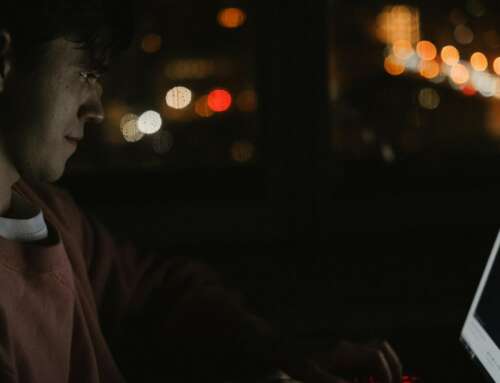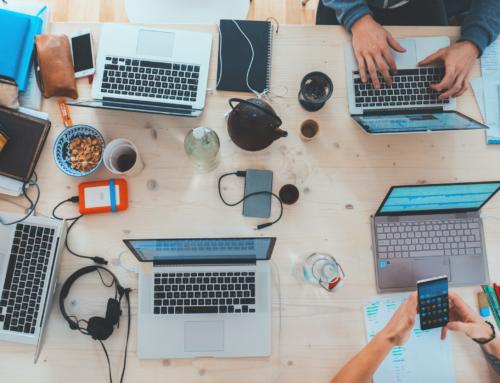Thousands of women outlined stories of sexual harassment at private school parties in a petition launched by Chanel Contos recently. Contos is calling for better sexuality education at school, which includes more information about consent.
After the March 4 Justice rally demanding better treatment of women in workplaces, schools and society several boys from Melbourne’s private Wesley College made misogynistic comments on a bus.
Wesley’s principal Nick Evans called the behaviour unacceptable and told the ABC pornography was a source of sex education for many students and “has to be a huge part of the conversation” in tackling violence against women.
Better sexuality education which teaches respect can go some way to counter the lessons young people take from pornography.
But our study on the delivery of sexuality education found some teachers were anxious about parental fear, negative media and political hysteria. Unfortunately, the teachers we spoke to considered teaching sexuality “risky”.
Consequently, schools and teachers in our study were watering down content, excluding some material and shutting down conversations.
Pornography and sex education
One of the reasons young people use pornography is to satisfy their curiosity about sex. And much of mainstream pornography models misogynist attitudes and problematic sexual behaviour.
Feminist author Andrea Dworkin made the link between pornography and misogyny in the 1970s. Feminist research continues to demonstrate a connection.
Most recently, sexuality educator Maree Crabbe wrote that porn
communicates a whole range of deeply problematic messages – about sex … gender, power, aggression, bodies, pleasure, sexuality, consent and race.
She wrote:
Porn is an incredibly powerful communicator. It can influence what we like and want without us even realising.
School sexuality programs
Between 2016 and 2017, one of the authors conducted in-depth interviews with nine teachers across nine Victorian government schools to find out how students are taught the skills to develop positive, healthy relationships. She observed the delivery of sexuality education and spoke with five principals about it.
Teachers said sex isn’t being discussed at home with parents. Instead, students are deliberately seeking out information about sex from pornography.
This corresponds with the findings of Our Watch that by the age of 13, nearly 50% of boys have viewed pornography.
Teachers expressed concern about students’ reliance on pornography. They talked about students believing what they see to be “the way you should act” or “how you do sex”. This includes questionable negotiations over consent.
One teacher said: “In pornography you’re seeing something that young people think is consensual.”
Respectful Relationships is a program that constitutes one component of sexuality education in some schools. It has the potential to combat the misogyny of mainstream pornography.
Respectful Relationships is a set of evidence-based resources promoting the development and maintenance of healthy relationships of all kinds. The resources are for use in and beyond sexuality education classes.
All Victorian government schools are mandated to deliver the Respectful Relationships curriculum as recommended by the royal commission into family violence. Although other schools in Australia may use this curriculum resource.
Specifically, there is a unit designed to “address the link between sexualisation, pornography, gender and respectful relationships”.
One teacher said about the program:
Girls can feel empowered by the program […] They may examine their relationship and see if it’s a respectful relationship.
The teachers we spoke with wanted to deliver this curriculum. They were well trained to do so. They knew their students and that the curriculum has the potential to counter what students learn outside the classroom.
While one teacher talked explicitly about the way the curriculum empowered girls, another described it as filling a gap in knowledge that prevented students from seeking bad information via alternative resources.
For this teacher, Respectful Relationships supported students to talk to her when they were considering having sex for the first time or when they experienced harmful sexual behaviour.
So, what’s the problem?
This curriculum provides tools for students navigating sex and sexuality, and for teachers to counter, even preemptively challenge, problematic ideas.
But with the public controversy over Safe Schools — a program that aims to help schools foster a safe environment supportive and inclusive of LGBTI students — at the forefront of their minds, teachers and principals detailed the many ways they sought to minimise parental fear and negative media associated with sexuality education.
One teacher said:
This is a really loaded subject […] it can really frighten people and they can think, ‘Christ, I have a little year 7 or a year 12 girl at that school’.
Teachers described censoring curriculum to avoid “riskier” content such as non-heterosexual sex and female pleasure. They also removed the words “sex” and “sexuality” from the title of programs, and limited parental knowledge about the programs they deliver.
During class observations the author witnessed teachers hesitant to engage with important but complex topics such as consent and same-sex intimacy.
The Respectful Relationships curriculum has the potential to combat the misogyny of porn. By giving teachers the confidence, support and opportunity to do the job they are employed to do, we are likely to see meaningful change.![]()
Sharon O’Mara, PhD Candidate in Crime, Justice and Legal Studies, La Trobe University and Kirsty Duncanson, Senior Lecturer in Crime, Justice and Legal Studies, La Trobe University
This article is republished from The Conversation under a Creative Commons license. Read the original article.
![]()





Leave A Comment